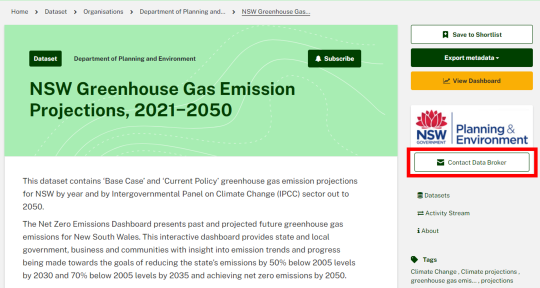SEED FAQs and Feedback
SEED Dataset FAQs
This page provides answers to frequently asked questions about the data in SEED. Also see About SEED for information about how and why SEED was developed.
What data is in SEED?
SEED strives to provide access to NSW environmental data produced by NSW Government agencies, Industry, the academic/research sector and the community through Citizen Science projects.
To see the scope of environmental data categories covered by SEED please see - About Environmental Categories.
In addition to datasets, SEED contains some links to other environmental portals with the intent to centralise as much data in SEED as possible. If you can’t find a dataset you need please let us know by suggesting a dataset.
Why might a dataset not be included?
There are various reasons why an existing environmental dataset might not be included in SEED:
- It is currently being assessed and prepared to be included.
- It is (possibly new) data that hasn’t yet been published.
- It is not in a format that is appropriate for SEED. (See 'Is data stored in SEED?' below.)
- It hasn't met the minimum criteria for inclusion, such as the minimum required metadata.
How do I suggest a dataset?
If you know of a dataset that you believe should be included in SEED, let us know using the Enquiries and Feedback page. If the data has not yet been published, SEED will advise and work with the data custodian to assist in making the data available if applicable.
Why might a dataset be listed without any data?
In some cases, SEED may include a listing that doesn't have any data associated with it. This may be the case in the following circumstances:
- The listing is for another data portal, rather than a dataset. (An example is the NSW Climate Data Portal.) In this case, the resources provided will be links through to that portal.
- The dataset is not freely available because: it has access restrictions; or it requires payment; or it can only be acquired with appropriate approvals; or it is of a sensitive nature (such as data that may infringe upon the privacy rights of NSW citizens).
- The dataset has been archived by the data provider. In this case, the Metadata Statement and Data Quality Statement will remain available.
How can I request a dataset that is not freely available?
If a dataset is not freely available, it may be possible to request it. The Metadata Statement will either specify the relevant Creative Commons licence or provide a link to more specific licence/conditions. If in doubt, contact the dataset provider using the details 'Custodian Name' and 'Custodian Email' in the metadata. Or click on the contact provided on the dataset page itself:
What devices can I use to access SEED?
SEED can be accessed on most web-enabled devices, including a personal computer, smart phone or tablet. SEED is compatible with the following web browsers: recent versions of Firefox, Chrome, Safari and Internet Explorer 9+.
How do I know when datasets have been added to SEED?
You can subscribe to a dataset or dataset filter, to be notified when any updates or changes are made. You can elect to receive notifications for all new datasets or only the filters you select. For more information on subscribing to datasets, click here. You can also select the 'Datasets' link on the SEED menu bar; this displays all datasets. Then use the 'Order By' dropdown to sort the results in order of 'Most Recently Updated'.
When searching by location, why do I see unrelated results?
SEED determines whether a dataset is relevant to a particular location based on the geographical extent defined by the data custodian (manager). If the extent is defined as 'NSW' (meaning the data has been collected across NSW), then the dataset is considered applicable to every location.
If you are using the spatial search, surrounding LGA’s will be included in your search.
What quality criteria does the data have to meet?
The data added to SEED must meet a minimum set of requirements to guarantee that its level of reliability, accuracy and quality are known to users. These are indicated in each dataset's Data Quality Statement. Keep in mind that quality refers to whether the data is appropriate for a specific use and needs to be assessed in context.
Was any remediation work done on datasets?
All datasets in SEED are as supplied from the data providers. The SEED development team did not conduct any data quality remediation work, although they worked closely with data providers to improve the quality of the data or supporting information where necessary.
Is data stored in SEED?
SEED is a portal (like a gateway to various data sources), not a repository. Where possible, the datasets continue to be held and maintained at their source by the organisations that own the data, and SEED provides a common medium to view it.
Datasets are made available in SEED through a technology called web services. These are a standardised web language that allows information from many other sources to be aggregated into a new and useful service.
To be included in SEED, a dataset must normally have been made available as a web service by the data owner. In rare cases where this is not possible, SEED developers will work with the data provider to make the data available through SEED.
What data standards have been used?
SEED follows the NSW Government metadata standards (ISO 15836, Dublin Core Metadata) and ANZLIC Metadata Profile Guidelines, (ISO 19115).
Both standards align with the NSW Government’s five criteria for adoption of standards for data and information, international best practice, the DATA.NSW portal and the Information Asset Register for NSW Government.
For a list of metadata collected for datasets in SEED, see About the Metadata Statement.

